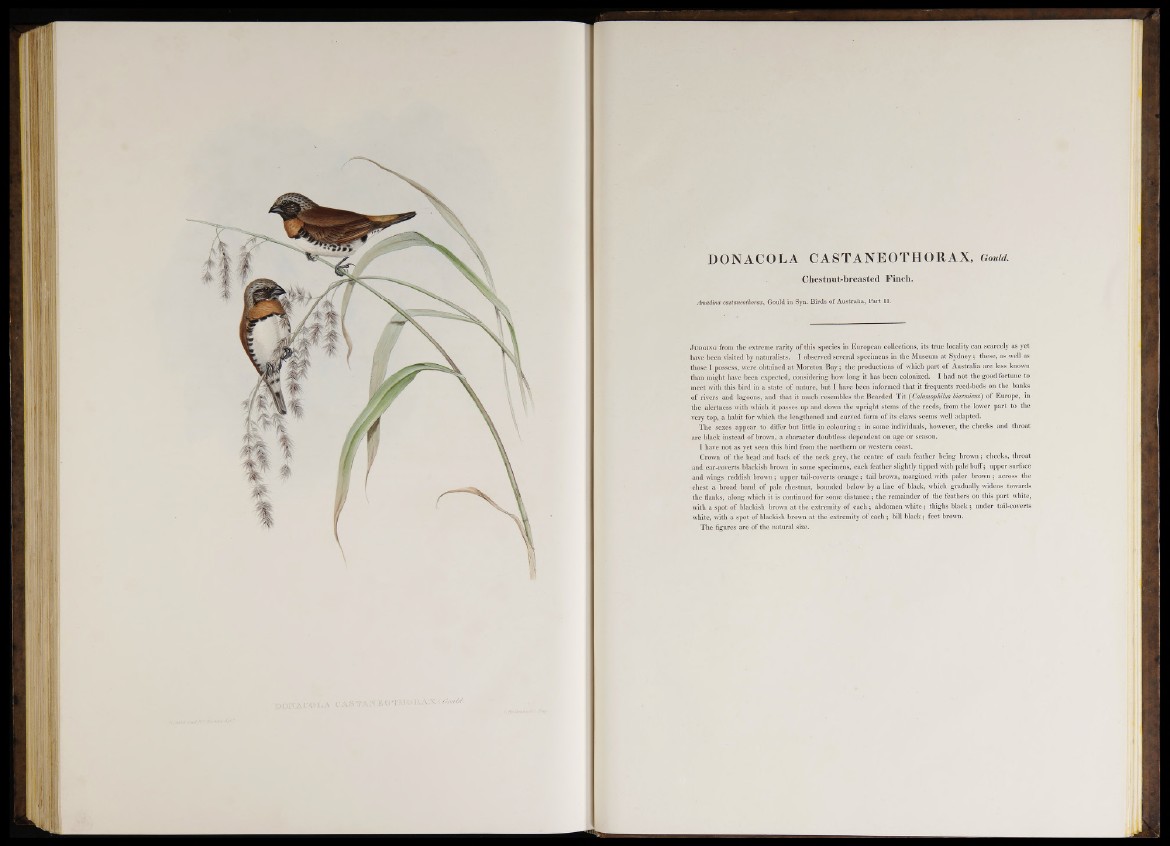
DONACOLA CASTANEOTHORAX, Oouid.
Chestnut-breasted Finch.
Amadina castaneothorax, Gould in Syn. Birds of Australia, Part II.
J u d g in g from the extreme rarity of this species in European collections, its true locality can scarcely as yet
have been visited by naturalists. I observed several specimens in the Museum a t Sydney; these, as well as
those I possess, were obtained a t Moreton B ay ; the productions of which p a rt o f Australia are less known
than might have been expected, considering how long it has been colonized. I had not the good fortune to
meet with this bird in a state o f nature, b u t I have been informed that it frequents reed-beds on the banks
of rivers and lagoons, and th at it much resembles the Bearded T it ( Calamophilus biarmicus) o f Europe, in
the alertness with which it passes up and down the upright stems o f the reeds, from the lower p a rt to the
very top, a habit for which the lengthened and curved form of its claws seems well adapted.
The sexes appear to differ but little in colouring; in some individuals, however, the cheeks and throat
.are black instead o f brown, a character doubtless dependent on age or season.
I have not as yet seen this bird from the northern o r western coast.
Crown of the h ead and hack of the neck grey, the centre o f each feather being brown; cheeks, throat
and ear-coverts blackish brown in some specimens, each feather slightly tipped with pale' buff; upper surface
and wings reddish brown ; upper tail-coverts o ran g e ; tail brown, margined with paler brown ; across the
chest a broad band of pale chestnut, bounded below by a line o f black, which gradually widens towards
the flanks, along which it is continued for some distance; the remainder of the feathers on this p art white,
with a spot o f blackish brown at the extremity of each \ abdomen wh ite; thighs b la c k ; under tail-coverts
white, with a spot of blackish brown a t the extremity of e a ch ; bill black; feet brown.
The figures are of the natural size.